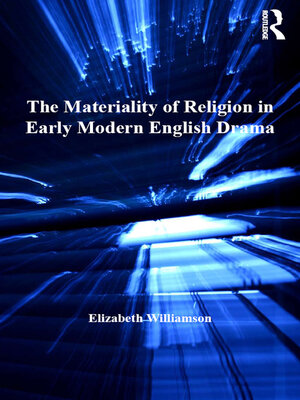
Sign up to save your library
With an OverDrive account, you can save your favorite libraries for at-a-glance information about availability. Find out more about OverDrive accounts.
Find this title in Libby, the library reading app by OverDrive.



Search for a digital library with this title
Title found at these libraries:
| Loading... |
The Materiality of Religion in Early Modern English Drama is the first book to present a detailed examination of early modern theatrical properties informed by the complexity of post-Reformation religious practice. Although English Protestant reformers set out to destroy all vestiges of Catholic idolatry, public theater companies frequently used stage properties to draw attention to the remnants of traditional religion as well as the persistent materiality of post-Reformation worship. The Materiality of Religion in Early Modern English Drama explores the relationship between popular culture and theatrical performance by considering the social history and dramatic function of these properties, addressing their role as objects of devotion, idolatry, and remembrance on the professional stage. Rather than being aligned with identifiably Catholic or Protestant values, the author reveals how religious stage properties functioned as fulcrums around which more subtle debates about the status of Christian worship played out. Given the relative lack of existing documentation on stage properties, The Materiality of Religion in Early Modern English Drama employs a wide range of source materials-including inventories published in the Records of Early English Drama (REED) volumes-to account for the material presence of these objects on the public stage. By combining historical research on popular religion with detailed readings of the scripts themselves, the book fills a gap in our knowledge about the physical qualities of the stage properties used in early modern productions. Tracing the theater's appropriation of highly charged religious properties, The Materiality of Religion in Early Modern English Drama provides a new framework for understanding the canonization of early modern plays, especially those of Shakespeare.






